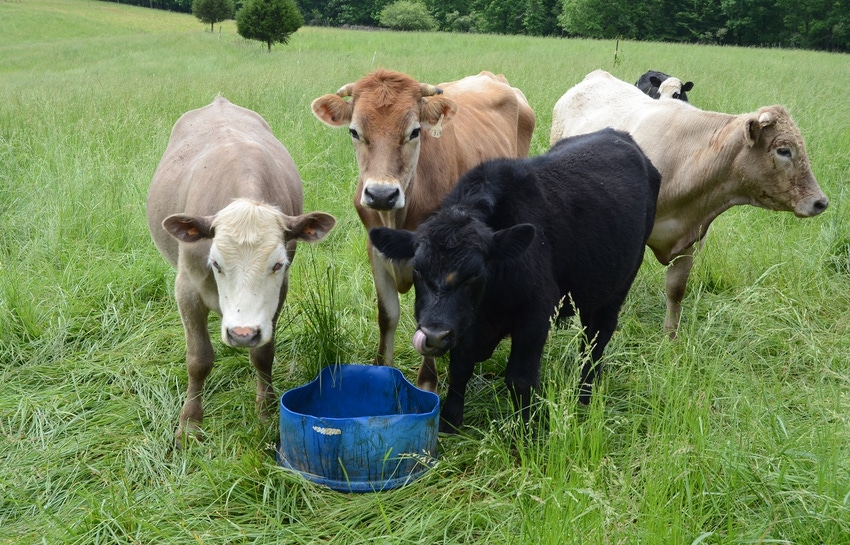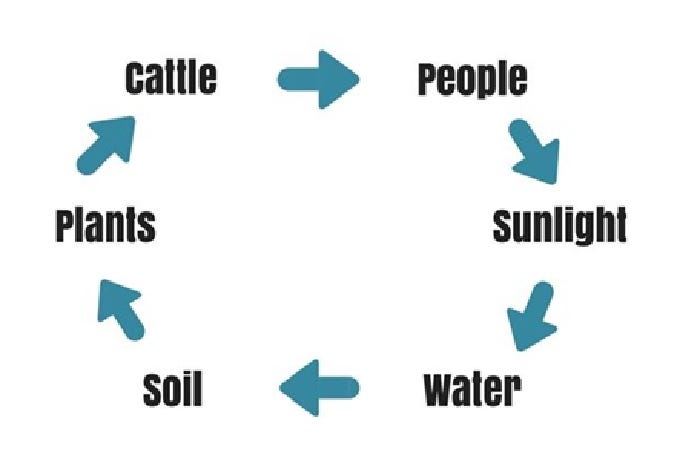
Most Beef Producer readers have likely ascertained that my health emphasis in a cattle operation has profits as its basis. In other words, if a product or procedure ain't making money or saving it, I tend to lose interest quickly.
This does not mean I have not spent a lot of time and money on programs, equipment and products that failed to achieve profitable returns. Quite the opposite. More than four decades in this business have taught me the hard way that there are not any silver bullets.
Over time, my thought processes have moved into a circle of the right cattle, the right diverse forage and the right soil. Clean water is a necessity on a daily basis for at least a short period of time. In some cases, snow can be substituted for water.
When more of us can totally recognize and learn that yearly profit per acre is our only worthy ranch economic goal we will move toward the front of the pack.
Remember the majority of what we hear and read is written by people who do not own cattle. Profit and animal health for that matter must be a mindset that stays with us most every waking moment. The late Gordon Hazard of Mississippi used to say that he got up with profit in mind every day and profit affected every right decision he ever made in the cattle business.
I read recently that less than 4% of US cattle operations maintain 200 or more cows. If it takes 500 cows (the old thumb rule) to make a full-time living then I'm guessing something less than 2% of producers are "full time." Those of us with fewer animals are part-time, but we are not in competition. I figure we are all colleagues or at least need to be.
There are three times as many people imprisoned in the US as there are cattle producers. We don’t need to be competing with each other. Why not compete with last year and see if we can't help everything get better?
The natural model that I harp on will build health into our operations as we learn and utilize the principles. Let's review some of these:
Soil health: Cattle health and production require mineralized organic soil and the diverse forage it produces with sunlight and moisture.
Plant health: Requires soil health, cattle, moisture, sunshine and complete plant recovery.
Human health: Requires healthy cattle.
Profitability: Requires healthy soil, high plant production, self-harvest by cattle, healthy and happy consumers and good marketing. Extremely low-cost production is a must.
Land taxes and payments and rent must be paid. Some insurance must be paid. We are forced to keep tires on the truck or we are going to walk. These are unavoidable or fixed costs.
Most ranches can handle the fixed costs and be profitable if variable costs are controlled and then soil, plant and animal health improve and keep improving and remain intact. The direct cost is what takes most folks out. These are usually considered the cost of production and health. Here is where the circle should make sense. Some forms of higher thinking tend to take us away from the natural model, which is circular. Straight-line or linear thinking has led the cattle business to health and economic disasters.

Seven important considerations I believe can help overcome linear thinking and pride are listed here:
Non-fixed overhead – How many tractors, four-wheelers, horses and other toys do you think you require?
Grazing control – Why didn't we move the herd today? How many herds can we combine for the majority of the year?
Pasture management – Why don’t we have grass in February and March?
Calving time – Cows and heifers have few problems with calves born six weeks after the green-up.
Supplement -- Wisely fed, supplement often can extend the grazing season and pasture by 15-20%, which is more than 30 days. I am willing to spend $50 this year per 1,000 pounds of body weight to have good grass in March. Long yearlings gaining weight in March and April are often ready to harvest in early June. Cows are ready to calve in mid-May, and heifers in June. Survivability of such calves is almost a no-brainer.
Yearling development -- We develop heifers the same as we develop yearling bulls and steers, all together.
Pretty is a fallacy -- Health and pretty are not the same. We don't do anything just for looks.
Most of our industry has totally forgotten and abandoned the natural model. We are seeing costs and expenses that the cattle will never pay for. It may be past time for us to stop buying inputs we don't need with money we don’t have to impress people we don’t know, trust or even like.
About the Author(s)
You May Also Like






